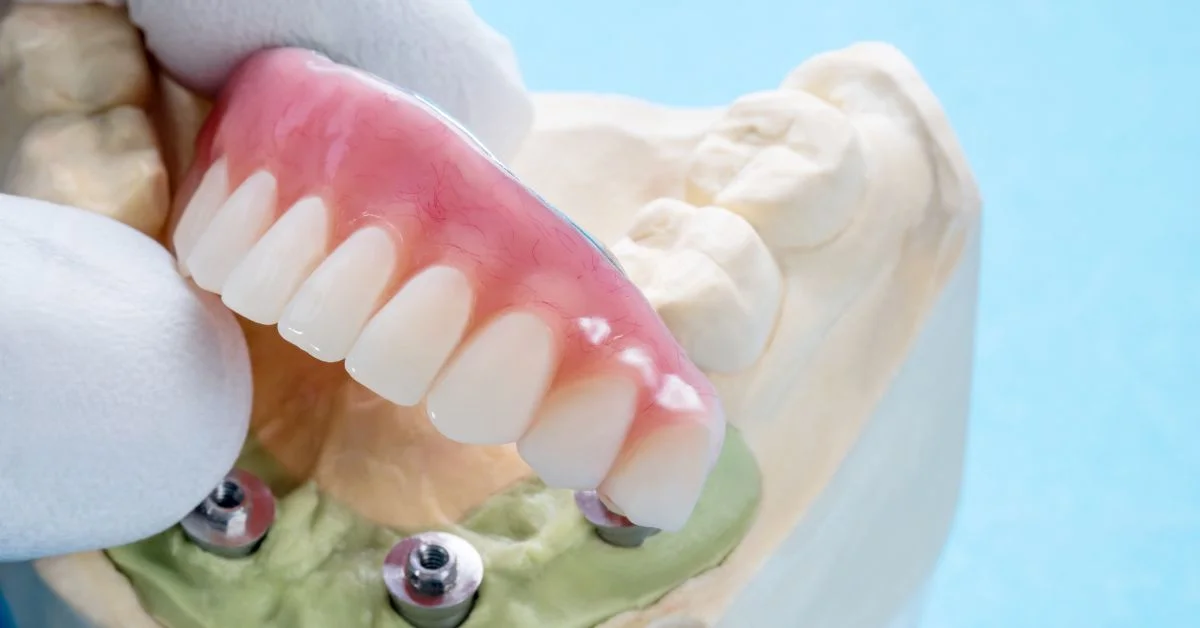If you’ve ever looked in the mirror and felt uncomfortable smiling because of a damaged or discolored tooth, ceramic teeth caps—also known as ceramic dental crowns—might offer the solution you didn’t know you needed. In today’s dental landscape, ceramic caps have emerged as a highly popular choice for restoring teeth thanks to their durability, natural appearance, and biocompatibility.
In the simplest terms, a ceramic teeth cap is a custom-made covering placed over a tooth to restore its shape, strength, and function. But this solution is more than cosmetic. It’s structural, long-lasting, and, when properly applied, nearly indistinguishable from your natural teeth.
This guide will walk you through what ceramic teeth caps are, how they’re made, who needs them, how the procedure works, and what to expect in terms of cost and care. Whether you’re exploring options for a chipped tooth, post-root canal protection, or cosmetic enhancements, understanding ceramic teeth caps can help you make an informed and confident decision.
READ MORE: Baby Cone: An Informational Deep Dive into a Curious Cultural and Practical Term
What Are Ceramic Teeth Caps?
Ceramic teeth caps, or ceramic dental crowns, are tooth-shaped coverings designed to fit over a tooth that is damaged, weakened, or cosmetically unsatisfactory. They are typically made entirely from ceramic materials such as porcelain or zirconia-based ceramics.
Unlike metal crowns, which may be visible and less aesthetically pleasing, ceramic crowns are valued for their ability to mimic the translucency and color of natural enamel. They’re often used on front teeth for cosmetic reasons but are increasingly being chosen for molars and bicuspids due to advancements in ceramic strength and bonding technology.
When Are Ceramic Teeth Caps Recommended?
Your dentist may recommend a ceramic crown in several scenarios:
1. To Protect a Weakened Tooth
Teeth that have large cavities, fractures, or have undergone root canal treatment often need caps to prevent further breakage.
2. To Restore a Broken or Worn Tooth
Chipped, cracked, or severely worn teeth can regain function and form with a ceramic cap.
3. For Cosmetic Improvement
A ceramic crown can improve the appearance of a discolored, misshapen, or asymmetrical tooth.
4. To Support a Dental Bridge
Crowns can anchor dental bridges by covering adjacent healthy teeth.
5. As a Finishing Step for Dental Implants
An implant crown—frequently ceramic—completes the implant restoration process.
Types of Ceramic Crowns
There are several types of ceramic materials used for dental caps, each with unique characteristics:
1. Porcelain-Fused-to-Metal (PFM)
Although technically not full ceramic, this option combines a metal base with porcelain overlay. Strong, but the metal core may show over time at the gumline.
2. All-Ceramic (Porcelain)
These crowns are made entirely from porcelain and offer excellent aesthetics. They’re best for front teeth where appearance is crucial.
3. Zirconia Crowns
Made from zirconium dioxide, these are extremely durable and biocompatible. They can withstand heavy chewing forces, making them ideal for molars.
4. Lithium Disilicate (E.max)
A newer ceramic that blends strength and aesthetics, lithium disilicate crowns are increasingly popular for both anterior and posterior restorations.
The Process: What to Expect When Getting a Ceramic Cap
1. Initial Consultation
Your dentist will examine the tooth and take X-rays. If a ceramic crown is appropriate, the process begins.
2. Tooth Preparation
A small portion of the tooth surface is removed to make space for the cap. This ensures the crown fits securely and doesn’t feel bulky.
3. Impression Taking
An impression or digital scan is made of the tooth and surrounding teeth. This model is used to craft your crown.
4. Temporary Crown Placement
A temporary crown is placed to protect the prepared tooth while the final cap is being made in a dental lab.
5. Permanent Crown Placement
Once ready, the permanent ceramic crown is cemented or bonded into place after checking for fit, color, and bite accuracy.
The entire process generally takes 2–3 weeks, although same-day crowns are possible in some clinics with in-office milling technology.
Advantages of Ceramic Teeth Caps
Natural Appearance
Ceramic caps can be color-matched to adjacent teeth, offering seamless aesthetics.
Biocompatibility
Ceramic materials are less likely to cause allergic reactions or gum irritation.
Durability
Modern ceramics—especially zirconia—are built to withstand chewing forces for many years.
Stain Resistance
Ceramic surfaces resist staining better than natural enamel, maintaining a brighter appearance longer.
Metal-Free Option
For those sensitive to metals or seeking a more natural solution, ceramic provides a suitable alternative.
Potential Drawbacks and Considerations
While ceramic crowns offer numerous benefits, it’s important to be aware of potential drawbacks:
Cost
Ceramic crowns tend to be more expensive than metal-based options.
Brittleness
Although strong, some types of ceramics (like porcelain) can be more prone to chipping under extreme force compared to metal crowns.
Tooth Preparation
More tooth reduction may be required compared to some other types of crowns.
Caring for Your Ceramic Teeth Caps
Ceramic crowns don’t require special care, but maintaining overall oral health is key to longevity.
Daily Habits:
- Brush twice a day with a non-abrasive toothpaste.
- Floss around the crown to prevent gum disease.
- Avoid biting hard objects (like ice or pens).
- Wear a nightguard if you grind your teeth.
Dental Checkups:
Routine visits will allow your dentist to check the crown’s integrity, bite alignment, and gum health.
When well cared for, ceramic caps can last 10–15 years, sometimes even longer.
Cost of Ceramic Teeth Caps
The cost can vary based on several factors:
| Factor | Range (USD) |
|---|---|
| Porcelain Cap | $800–$2,000 |
| Zirconia Cap | $1,000–$2,500 |
| Additional Procedures (e.g. root canal) | $500–$1,500 |
| Insurance Coverage | May cover 50–80% if medically necessary |
Note that cosmetic uses may not be fully covered by dental insurance plans.
Ceramic vs. Other Types of Dental Crowns
| Crown Type | Aesthetics | Strength | Best For |
|---|---|---|---|
| Ceramic | Excellent | Moderate–High | Front teeth, cosmetic needs |
| Metal | Poor | Excellent | Molars, patients with strong bite |
| PFM | Good | Very Good | Posterior teeth |
| Resin | Moderate | Low | Temporary crowns only |
| Zirconia | Very Good | Excellent | Molars, bridges |
Ceramic crowns occupy a sweet spot for patients who prioritize appearance without fully sacrificing strength.
Innovations in Ceramic Cap Technology (2025 Update)
As of 2025, ceramic crown technology continues to advance in key ways:
- 3D Printing and CAD/CAM Milling: Same-day crowns are now more precise and accessible.
- Hybrid Ceramics: Materials that combine the strength of zirconia with the translucency of porcelain.
- Digital Impressions: Eliminating the need for messy impression trays.
- AI Design Integration: Artificial intelligence assists in custom designing crowns for optimal bite and wear distribution.
These innovations are making ceramic crowns more accessible and precise than ever before.
Is a Ceramic Teeth Cap Right for You?
The decision to get a ceramic crown should be made in consultation with your dentist, considering:
- The location of the tooth
- Aesthetic goals
- Budget and insurance coverage
- Long-term oral health needs
In general, ceramic caps are an excellent solution for visible teeth that require strength, protection, and a natural appearance.
Final Thoughts
Ceramic teeth caps represent the best of modern dentistry: a marriage of function, form, and innovation. With advances in material science and digital fabrication, ceramic crowns are no longer limited to elite dental practices—they’re becoming an accessible, durable, and aesthetically pleasing solution for patients everywhere.
Whether you’re dealing with tooth decay, planning cosmetic improvements, or finishing a dental implant, ceramic crowns offer a blend of beauty and resilience that few other materials can match.
If you’re considering a ceramic crown, consult your dentist about your options and needs. The right crown can do more than restore your tooth—it can restore your smile, your bite, and your confidence.
Frequently Asked Questions (FAQs)
1. How long do ceramic teeth caps last?
With proper care, ceramic crowns can last 10 to 15 years or more. Factors like oral hygiene, grinding habits, and dental visits influence their longevity.
2. Do ceramic caps look natural?
Yes. Ceramic crowns are designed to match the color, shape, and translucency of natural teeth, making them virtually indistinguishable.
3. Are ceramic crowns safe for people with metal allergies?
Absolutely. Because they are metal-free, ceramic crowns are often recommended for patients with sensitivities to alloys used in traditional crowns.
4. Can I eat normally with a ceramic crown?
Yes, though you should avoid chewing very hard foods like ice or unpopped popcorn kernels, especially during the first few days after placement.
5. Will my insurance cover a ceramic crown?
It depends. If the crown is medically necessary (e.g., post-root canal), insurance may cover 50–80%. Cosmetic-only procedures may be out-of-pocket.









